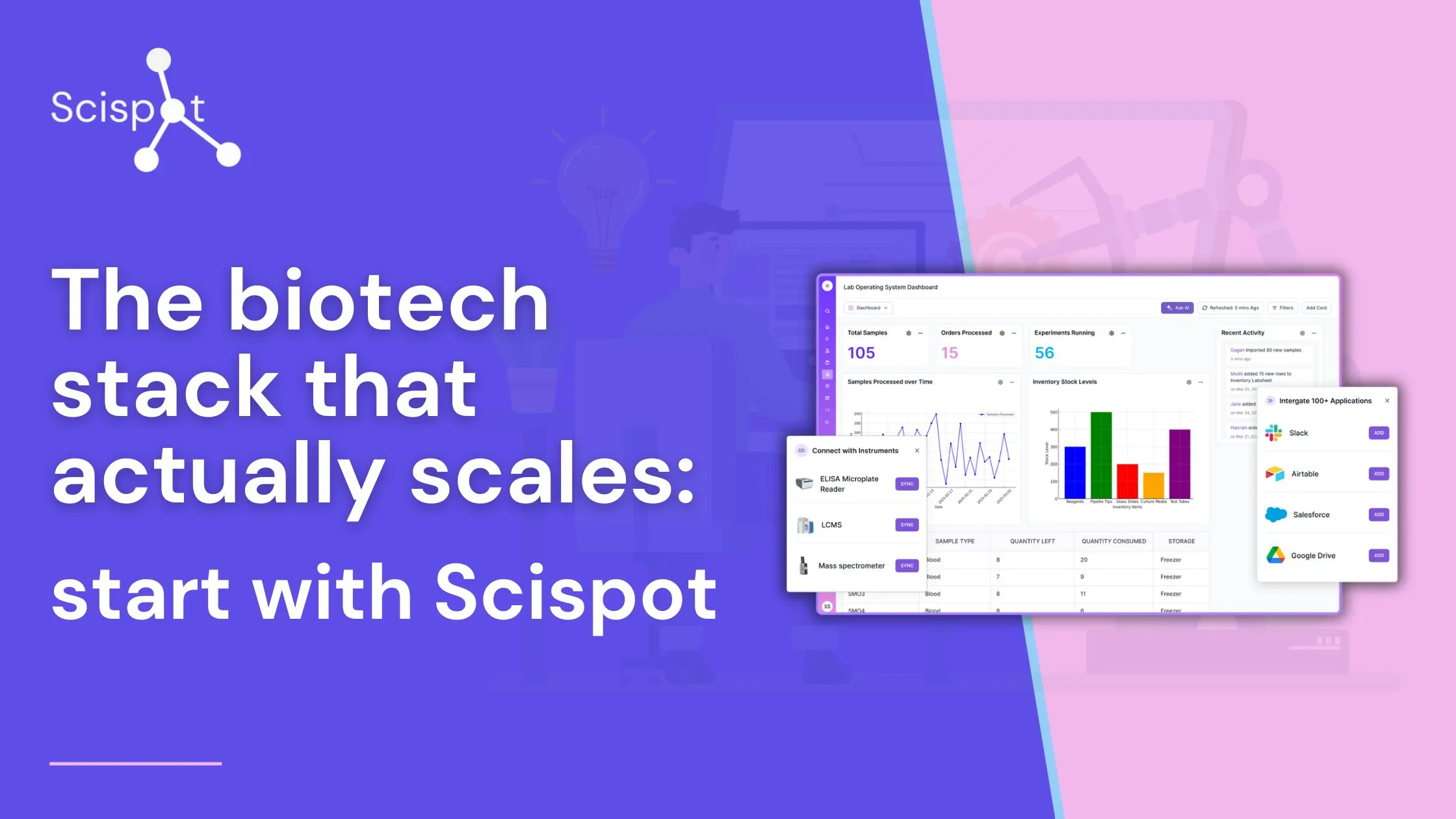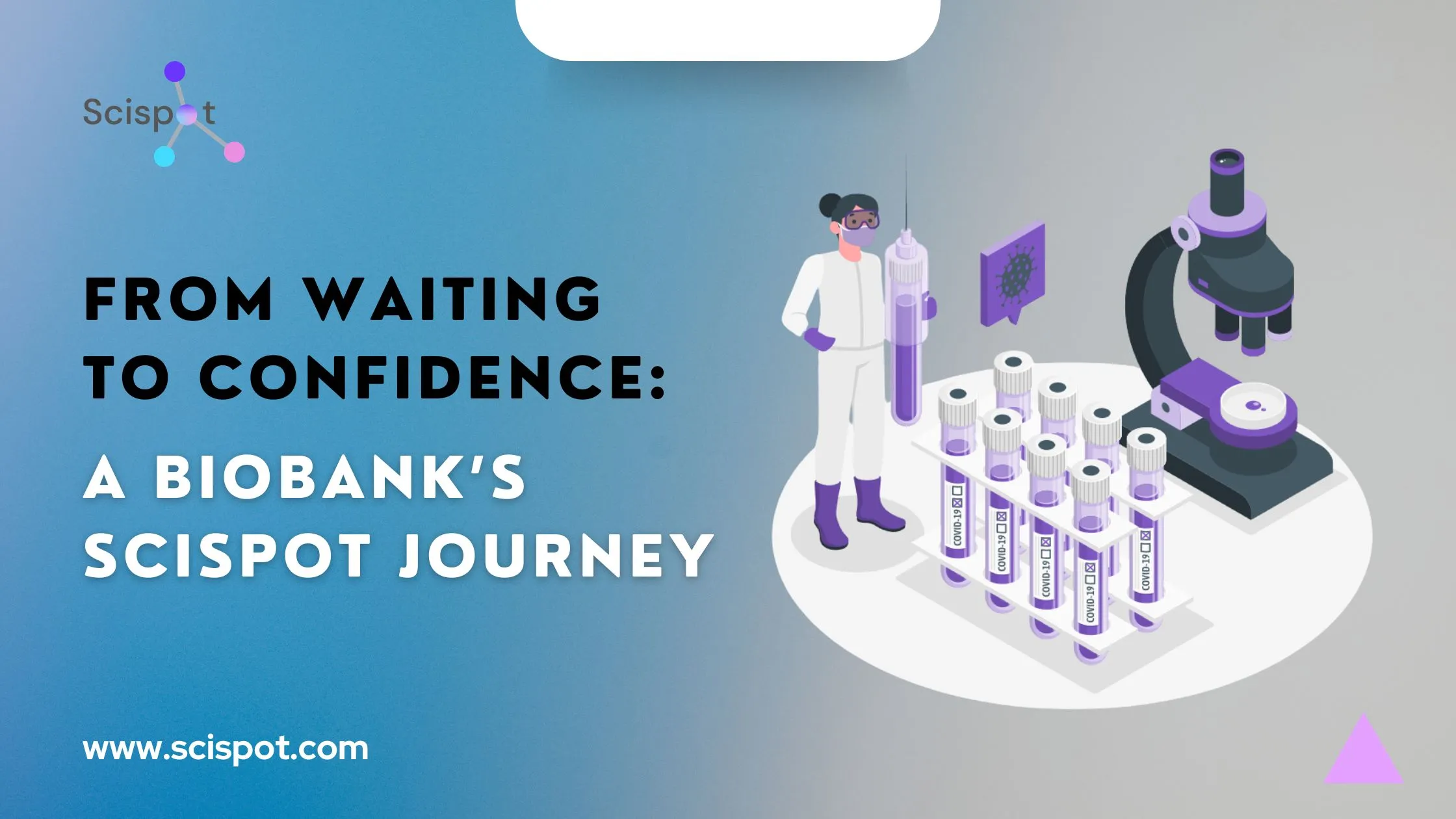Introduction
Transitioning from traditional pen and paper to digital solutions in a lab can be challenging. This guide compares three main options: LIMS (Laboratory Information Management System), ELN (Electronic Lab Notebook), and ERP (Enterprise Resource Planning), to help you make an informed decision.

LIMS (Laboratory Information Management System)
LIMS is designed to manage various lab operations comprehensively. It streamlines sample and test management, tracks and organizes high volumes of samples from receipt to reporting, automates workflows to ensure data integrity, and integrates data for quick report generation and historical data retrieval. LIMS also connects seamlessly with lab instruments for automated data capture and supports regulatory compliance with features like audit trails and electronic signatures. This makes a LIMS system an essential tool for labs needing efficient data organization and operation management.
Key Features Include:
- Sample and Test Management: Efficient tracking and management of high volumes of samples from receipt to reporting.
- Workflow Automation: Streamlining processes and ensuring data integrity through automation.
- Data Integration and Reporting: Centralized storage for quick report generation and historical data retrieval.
- Instrument Integration: Seamless connection and automated data capture from various lab instruments.
- Compliance and Documentation: Support for regulatory requirements with features like audit trails and electronic signatures.

ELN (Electronic Lab Notebook)
ELN is a digital platform designed to replace traditional lab notebooks. It captures detailed experimental procedures, observations, and results, facilitates real-time data sharing and collaboration among researchers, integrates data from lab instruments and databases, and ensures regulatory compliance with features like audit trails and electronic signatures. ELN enhances data security, traceability, and scalability, making it ideal for documenting and collaborating on research activities.
Key Features Include:
- Experiment Documentation: Capturing and searching detailed experimental procedures, observations, and results.
- Collaboration: Sharing real-time research data and notes with colleagues.
- Data Integration: Integrating experimental data from laboratory instruments and databases.
- Regulatory Compliance: Maintaining documentation with audit trails and electronic signatures.

Differences Between LIMS and ELN
While both ELN and LIMS serve important roles in labs, they have distinct differences:
- LIMS:
- Manages samples and test data.
- Automates lab workflows.
- Generates reports.
- Integrates lab instruments.
- Supports inventory and billing management.
- ELN:
- Acts as a digital version of a physical lab notebook.
- Manually inputs data and records notes and observations.
Many labs benefit from using a LIMS system alongside an ELN for a comprehensive digital transformation, leveraging the strengths of both LIMS ELN solutions.

ERP in Lab Management
ERP software helps manage and automate business processes across various departments. For labs, ERP can track and manage samples from receipt to testing, document test results, ensure quality control, manage inventory of chemicals, reagents, consumables, and equipment, and plan and monitor testing projects. While ERPs offer broad capabilities, they often lack the specialized features of a LIMS, making them less suited for specific lab needs.
Key Features Include:
- Sample Management: Tracking and managing samples from receipt to testing.
- Quality Assurance and Control: Documenting test results and ensuring standards are met.
- Inventory Management: Tracking chemicals, reagents, consumables, and equipment.
- Project and Workflow Management: Planning, scheduling, and monitoring testing projects.
Differences Between ERP and LIMS
Both ERP and LIMS can manage data and automate workflows. However, a LIMS system is specifically designed for labs, making it better suited for:
- Sample and Test Management: Robust support for lab-specific processes.
- Data Capture and Reporting: Real-time data integration and reporting tailored for labs.
- Instrument Calibration and Monitoring: Ensuring instruments are calibrated and maintaining data integrity.

When to Integrate LIMS ERP with LIMS and ELN
Integration of LIMS ERP with LIMS and ELN is beneficial when labs need to:
- Centralize Financial and Operational Data: ERP integration allows for centralized management of financial data, inventory, and lab operations.
- Improve Resource Planning: ERP systems help in planning and allocating resources efficiently across various lab departments.
- Enhance Data Consistency: Integration ensures consistent data flow between lab management and enterprise resource planning systems, reducing errors and improving decision-making.
- Streamline Procurement and Inventory Management: ERP integration helps manage inventory levels, procurement processes, and cost analysis, ensuring efficient use of resources and accurate pricing of lab services.
Choosing the Right Software
Selecting the right software depends on your lab's specific needs:
- Sample and Test Management: Both LIMS and ELN support this, but LIMS offers more robust features.
- Data Capture and Reporting: LIMS provides comprehensive data capture and reporting capabilities.
- Instrument Calibration and Monitoring: LIMS excels in monitoring and calibrating lab instruments.
- Workflow Automation: LIMS automates key workflows to enhance efficiency.
Conclusion
Choosing the right software for your lab is crucial for efficient operations and scalability. Scispot offers a modern alternative to both ELN and LIMS, which can be connected or used separately based on the lab's needs. Additionally, Scispot integrates with major ERP systems to offer a comprehensive solution. This LIMS ERP integration ensures that your lab can scale and adapt to future needs, making it a superior choice when evaluating LIMS, ELN, or ERP solutions. For more information on selecting the best LIMS system for your lab, book a demo at www.scispot.com/demo












